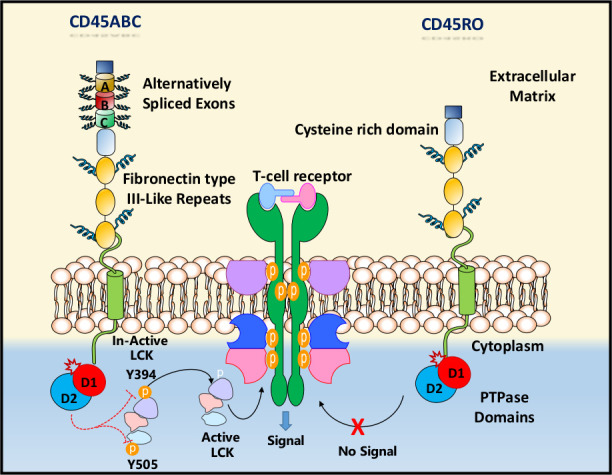Figure 1.

An illustration of CD45 structure. Different types of CD45 isoforms are expressed by haematopoietic stem cells (HSCs) based on alternative splicing of exons A, B and C. This results in modifications of the NH2-terminal domain of approximately 200 amino acids that contains many residues such as serine and threonine. This portion of CD45 structure is rich of O-glycosylation events which explains the distinctive glycosylation patterns of each CD45 isoform. Consequently, different lineages of HSCs express different types of CD45 isoforms based on different stages of differentiation and glycosylation events. The cysteine rich domain is connected by three fibronectin type III (FN III-like) repeats, a transmembrane domain followed by a cytoplasmic tail which contains two protein tyrosine phosphatase (PTPase) regions (D1 and D2). While D1 is characterised by PTPase activity, D2 has no enzymatic activity, but it is necessary for CD45 substrate recruitment and provide flexibility in folding of the molecule.
